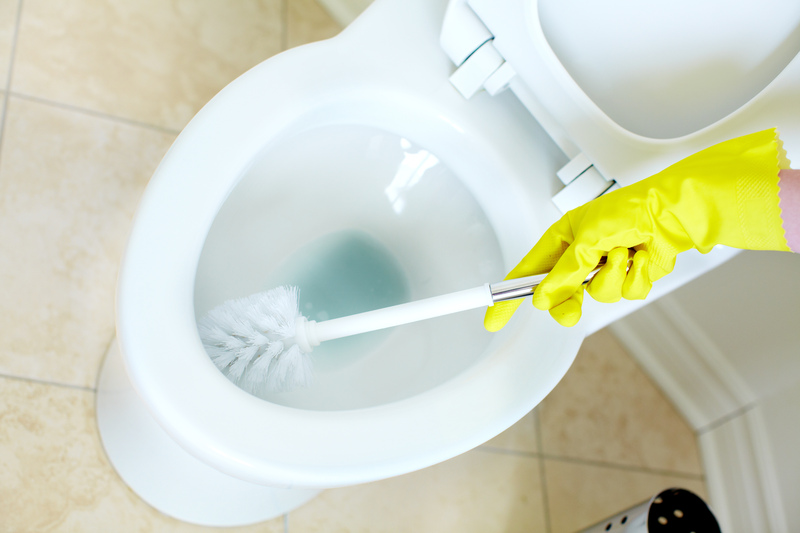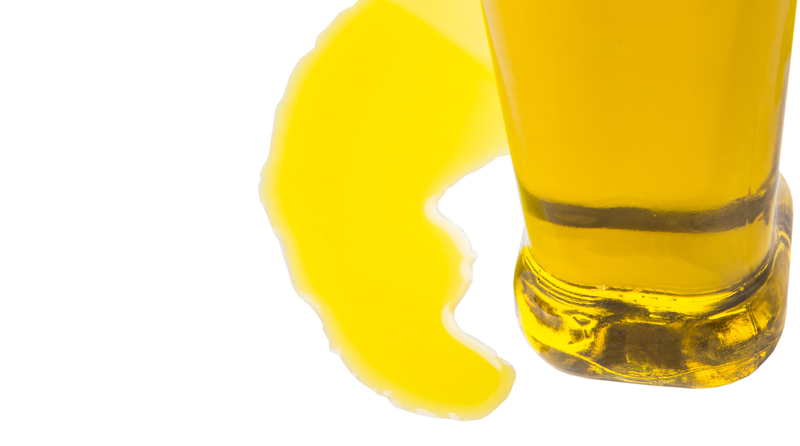Quick Tips for Removing Burn Marks from Your Stovetop
Posted on 26/05/2025
Quick Tips for Removing Burn Marks from Your Stovetop
Stovetops are the heart of any kitchen, but they can quickly develop unsightly burn marks from all that cooking action. If you're wondering how to keep your cooking surface clean and sparkling, you're in the right place. Our guide reveals the quickest and most effective methods for removing burn marks from your stovetop, no matter the surface type--gas, electric, or glass. Follow these step-by-step tips and restore your stovetop's shine in no time!

Understanding Burn Marks on Different Types of Stovetops
Before diving into removal strategies, it's important to know the kind of stovetop you have. Each type--stainless steel, ceramic, glass, or cast iron--requires a slightly different approach for safe and effective cleaning.
- Stainless Steel Stovetops: Prized for their durability, but can scratch easily.
- Glass and Ceramic Stovetops: Sleek, attractive, but more delicate.
- Electric Coil Stovetops: Traditional and robust, though they accumulate grime underneath coils.
- Gas Stovetops: Burner grates and drip pans get stained easily with burnt residues.
Regardless of your stovetop type, burn marks aren't just an eyesore--they can also affect cooking performance and longevity. Let's tackle these stubborn stains with simple techniques you can use today!
Essential Supplies for Removing Burn Marks from Your Stovetop
- Baking Soda
- Vinegar
- Lemon Juice
- Dish Soap
- Non-abrasive Sponge or Soft Cloth
- Plastic Scraper or Old Credit Card
- Microfiber Towel
- Specialized Stovetop Cleaner (optional)
- Gloves (to protect hands)
Tip: Always let the stovetop cool completely before cleaning to avoid burns and damage.
Quick Tips and Methods for Removing Burn Marks from Your Stovetop
1. Baking Soda and Vinegar Magic
This classic combination is one of the most versatile and effective stovetop burn mark removers. Baking soda is a mild abrasive that gently lifts burnt-on residue, while vinegar helps break down mineral stains.
- Sprinkle baking soda generously over the burn marks.
- Spray white vinegar on top--the mixture will fizz as it starts to work.
- Let sit for 10-15 minutes to loosen stubborn stains.
- Gently scrub the area with a non-abrasive sponge, scrubbing in circles.
- Wipe clean with a damp cloth, and dry with a microfiber towel for a shiny finish.
2. Lemon Juice Power
Lemons are natural degreasers, ideal for tackling burnt-on marks on glass stovetops. Their acidity helps break down grime, plus the citric acid leaves a pleasant, fresh scent.
- Cut a lemon in half and rub it directly over the burnt areas.
- Let the lemon juice sit for five minutes to penetrate the stains.
- Sprinkle a little baking soda over the same spots and gently scrub.
- Wipe the area with a damp cloth to remove residue.
3. Dish Soap and Hot Water for Fresh Burn Stains
If the burn mark is recent, the solution might be as simple as dish soap and hot water.
- Mix a few drops of dish soap in a bowl of hot water.
- Soak a soft cloth or sponge and place it over the burn mark for a minute.
- Wipe and rinse, repeating as necessary until the surface is clean.
4. Specialized Stovetop Cleaners
For tough, stubborn burnt marks that are not responding to natural solutions, it's time for a more powerful approach. Several stovetop cleaners are formulated for specific surfaces such as glass and ceramic.
- Always read instructions to ensure compatibility with your stovetop.
- Apply the cleaner according to the product directions.
- Use a non-abrasive cleaning pad to avoid scratches while scrubbing.
- Rinse thoroughly and buff to a shine with a microfiber towel.
5. Scraping with Care: Use a Plastic Scraper
On delicate surfaces like glass or ceramic, a plastic scraper or even an old credit card can be highly effective for lifting away stubborn burn marks without causing surface damage.
- Hold the scraper at a 45-degree angle.
- Gently work under the edge of the burn mark to lift it off.
- Wipe away loosened debris with a damp cloth.
- Repeat if necessary, being careful not to apply excessive pressure.
Preventing Burn Marks on Your Stovetop
Keeping your stovetop free from additional burn marks is essential. Incorporate these practices into your cooking routine for a spotless appliance:
- Wipe up spills immediately: Burn marks form quickly when food residue is left to sit and cook on hot surfaces.
- Use cookware of appropriate size: Avoid pans that are too large or small for the burner, as overflow can cause stains and scorches.
- Monitor heat levels: Cooking on excessively high temperatures can increase the likelihood of spills and scorch marks.
- Clean grates, burners, and drip pans weekly: This keeps debris and burnt-on grease to a minimum.
Tips for Cleaning Specific Types of Stovetops
Cleaning Burnt Marks from Stainless Steel Stovetops
- Avoid steel wool or abrasive pads: These will scratch the finish.
- Use a baking soda paste (two parts baking soda to one part water) and apply to burn marks. Let sit, then gently scrub with a soft sponge.
- Finish with a stainless steel cleaner or a few drops of olive oil to polish and restore shine.
Burn Mark Removal for Glass and Ceramic Stovetops
- Always use non-abrasive sponges: Scratches are much more visible on glass surfaces.
- For persistent stains, use a designated glass stovetop cleaner and plastic scraper together.
- Buff to a streak-free finish using a microfiber towel and a splash of diluted vinegar.
Gas and Electric Coil Stovetop Burn Mark Solutions
- Remove grates and drip pans: Wash separately in hot, soapy water or run through the dishwasher if dishwasher-safe.
- For electric coils, ensure they're disconnected before cleaning: Wipe with a damp cloth; do not immerse in water.
- Use a paste of baking soda on baked-on residue and scrub gently.
Common Mistakes to Avoid When Removing Burnt Stains from Stovetops
- Never use harsh chemicals or abrasive tools: These cause permanent damage and void warranties.
- Do not attempt to clean while the stovetop is hot: This can cause burns and worsen stains.
- Don't use razor blades on glass unless specifically allowed by the manufacturer: Use only gentle plastic scrapers for safety.
- Avoid soaking gas burners or electric coils: Water can damage mechanisms and lead to malfunctions.
Frequently Asked Questions about Removing Burn Marks from Stovetops
Can all burn marks be removed from a stovetop?
Most burn marks and scorch stains can be removed with patience and the right techniques. However, severe burns that have damaged the finish may be permanent. Regular cleaning and maintenance minimize the risk of irreparable damage.
Is it safe to use baking soda and vinegar on every stovetop?
Baking soda and vinegar are safe for most stovetops, but always spot-test on a small, inconspicuous area first--especially for delicate glass or ceramic surfaces. Avoid letting mixtures sit too long on aluminum or unsealed surfaces, as prolonged contact can dull the finish.
How often should I clean my stovetop to prevent burn marks?
It's best to wipe your stovetop after every use, with deeper cleanings weekly or when stubborn stains appear. Frequent maintenance keeps tough burn marks from forming in the first place.

Conclusion: Restore Your Stovetop's Sparkle Fast
Getting rid of unpleasant burn marks on your stovetop doesn't have to be daunting or time-consuming. With these quick tips for removing burn marks from your stovetop, you can enjoy a clean, vibrant kitchen every day. Remember: act fast, use gentle methods, and choose cleaning supplies suited to your stovetop's material. Not only will you improve its appearance, but you'll also extend its lifespan for years of dependable cooking. Put these burn mark removal strategies to work today and keep your stovetop spotless!
More Kitchen Cleaning Resources
- How to Clean Glass Oven Doors
- Best Ways to Remove Grease from Kitchen Surfaces
- Deep-Cleaning Your Microwave: Step-by-Step Guide
- Maintaining Stainless Steel Appliances
Ready to tackle those burn marks? Start with these quick methods and let your stovetop shine like new!




